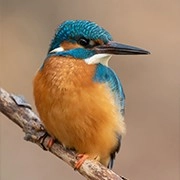Mystery Forest Hunter

The Eurasian lynx is a medium-sized wildcat and one of the four lynx species still living today. Its range stretches from northern Europe, through central and eastern Europe, all the way to Central Asia, Siberia, the Tibetan Plateau, and the Himalayas.
Despite its wide distribution, this fascinating feline faces threats from habitat loss, fragmentation, poaching, and dwindling prey. Observing its life reminds us how fragile yet resilient nature can be, and it inspires us to pay closer attention to the forests they call home.
Where They Roam
We find Eurasian lynxes in temperate and northern forests below 5,500 meters (18,000 feet). These forests offer cover, hunting grounds, and a safe place to raise young. In winter, the lynx relies on thick fur and broad, furry paws to move easily through snow. They are very adaptable and can survive in both dense forests and more open woodland areas, though human activity often limits their range. By understanding where lynxes live, we can appreciate the importance of preserving these habitats for the balance of nature.
Appearance: Nature’s Snow Navigator
Eurasian lynxes have short reddish or brown fur, dotted with black spots that vary from individual to individual. Their underbelly, neck, and chin are white, and lynxes in the southern range tend to have brighter fur with more spots. Winter coats grow thick and can shift from silver-gray to gray-brown, sometimes showing darker stripes on the forehead and back.
They have strong, relatively long legs, large padded paws covered in fur for walking silently on snow, and short tails with black tips. Ears are tipped with black tufts, and a long grayish-white ruff frames the face, giving the lynx a noble and stealthy appearance.

Size and Strength
Among lynx species, the Eurasian lynx is the largest. Males typically measure 76–106 cm (30–42 inches) long, females 73–99 cm (29–39 inches), with shoulder heights of 55–75 cm (22–30 inches). Tail lengths range from 11–24.5 cm (4.3–9.6 inches). The largest males can reach up to 130 cm (51 inches) in total length. In Russia, most lynxes weigh between 12–32 kg (26–71 lbs), though individuals over 30 kg (66 lbs) are rare.
A remarkable record from the Altai Mountains noted a lynx weighing 35 kg (77 lbs). Regional variations exist: lynxes in Fennoscandia and western Europe are smaller, 7–26 kg (15–57 lbs), but some Carpathian individuals can rival the Altai lynxes in size.
Behavior and Adaptation
We observe that Eurasian lynxes are solitary hunters, relying on stealth, keen hearing, and sharp vision. They mainly hunt deer, hares, and smaller mammals, using their strong limbs and padded paws to move silently. The lynx’s spotted coat provides excellent camouflage, allowing it to stalk prey without being seen. When prey is scarce, lynxes adapt by expanding their hunting range or shifting to smaller animals. These behaviors show remarkable intelligence and resilience, reminding us that wildlife is constantly adjusting to survive in changing environments.
Life Cycle and Territory
Eurasian lynxes are solitary but maintain defined territories. Males usually have larger ranges than females and may mark boundaries with scent to avoid conflicts. Breeding season occurs once a year, usually in late winter or early spring. Cubs are born blind and helpless, relying entirely on the mother for food and protection for the first few months. By watching their family dynamics, we can see the complexity of their lives, the effort it takes to survive, and the importance of a safe and stable habitat.
Conservation Status
Currently, the Eurasian lynx is listed as “Least Concern” by the IUCN, but this doesn’t mean it is safe from danger. Habitat loss, fragmentation, and illegal hunting remain threats. Conservation programs focus on forest preservation, monitoring populations, and ensuring prey availability. Some countries have reintroduced lynxes into areas where they had disappeared. By learning about their needs and challenges, we can better support efforts to protect them and the forests they rely on.
Guardians of the Forest
Lykkers, the Eurasian lynx is more than just a forest predator. Its powerful build, striking appearance, and secretive habits make it a symbol of wilderness resilience. Observing and understanding this remarkable cat helps us appreciate the ecosystems it inhabits. Next time we explore forests or snowy mountains, we’ll remember that these silent, spotted hunters are moving, hunting, and surviving in ways that inspire us to value and protect the natural world. Protecting lynxes means protecting forests—and ourselves.
Eurasian Lynx: Masters of Stealth and Camouflage | Wild Cats Facts
Video by Wildlife Pedia English

 · Animal Team
· Animal Team